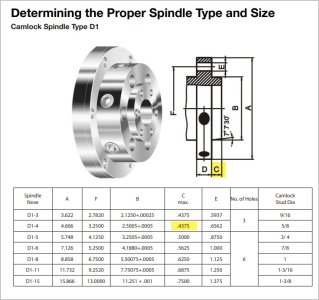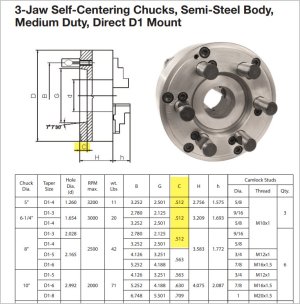Here is a Youtube video of that procedure by Mr. Crispin, he's a machinist working for Rolls Royce:
You guys are testing my patience. Holy crap I hate you tube. But I watched it.
To my eye, he isn't traversing the full rear face with the grinder, just the inside portion. I must be imagining that.
I also wonder why he paid zero attention to the front nose face. On my lathe that face is just like the rear face making contact after a thou or so of tightening. Recall that this face is where that teeny tiny chip was that I mentioned earlier. Is this face not important too? Or does it just go along for the ride?





